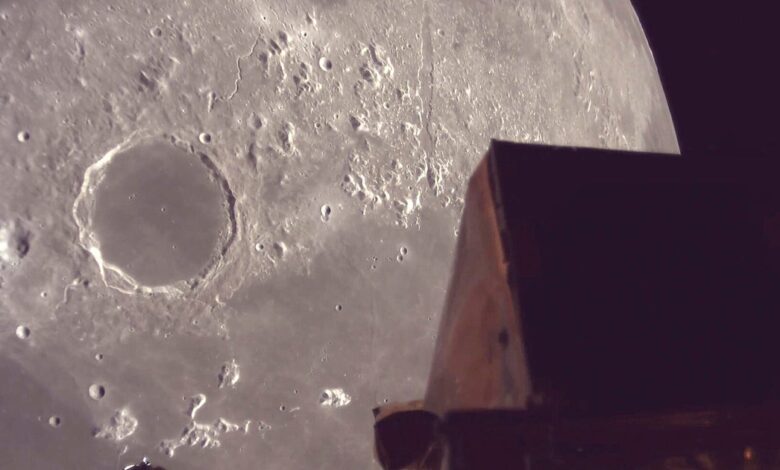Private Japanese lunar lander makes descent to surface of the moon, but fate is unknown

Four-and-a-half months after its launch on a Falcon 9 rocket, a privately-built Japanese robotic lander made an attempt to touch down on the moon. Unfortunately, communications were lost at or near the expected moment of landing, leaving flight controllers uncertain about the fate of the spacecraft.
Amateur radio enthusiasts monitoring signals from the Resilient lander speculated that it might have been descending too quickly for a safe landing. Ispace, the company behind the mission, abruptly ended its landing webcast without providing any updates on the status of the spacecraft.
This landing attempt came two years after ispace’s first lander ran out of fuel and crashed on the lunar surface. With Resilient, the company aimed to become only the second private entity to successfully land a probe on the moon, following the accomplishment of Austin-based Firefly Aerospace with its Blue Ghost lander in March.
Carrying cameras, scientific instruments, a small rover, and even an art project, Resilient initiated its descent from a 62-mile-high orbit to the Moon’s surface near Mare Frigoris. As the projected landing time approached, telemetry suddenly ceased, leaving the ispace team in Tokyo anxiously awaiting news of the lander’s status.
Despite the lack of communication, ispace engineers continued their efforts to establish contact with Resilient. The primary objectives of the mission included landing on the moon and deploying the micro-rover Tenacious, which carried a miniature model of a Swedish house designed by artist Mikael Genberg.
Genberg explained that the project, which involved years of planning and fundraising, was a creative endeavor without an explicit purpose, similar to the construction of the Eiffel Tower. The “moonhouse” was expected to endure for thousands, if not millions, of years in the moon’s harsh environment, although its paint would likely fade and lunar dust would gradually cover its surface.
Following the landing, the moonhouse was scheduled to be released from the rover. While the project’s cost was undisclosed, a spokesperson noted that it was comparable to the price of a relatively large house on Earth. Ispace is one of several companies vying to offer commercial transportation services to the moon for various payloads, but as previous missions have demonstrated, achieving a successful lunar landing is no easy feat.
Prior to this attempt, only Firefly Aerospace had accomplished a lunar landing with its Blue Ghost spacecraft. Resilient and Blue Ghost were launched together on a SpaceX Falcon 9 rocket, with Blue Ghost taking a direct route to the moon and successfully completing its mission. Resilient, on the other hand, followed a longer trajectory that utilized the moon’s gravity to reach its intended orbit before the landing attempt.
As the fate of Resilient remained uncertain, the ispace team continued their efforts to establish contact with the lander. The outcome of this mission will provide valuable insights into the challenges of landing spacecraft on the moon and the complexities of space exploration.





